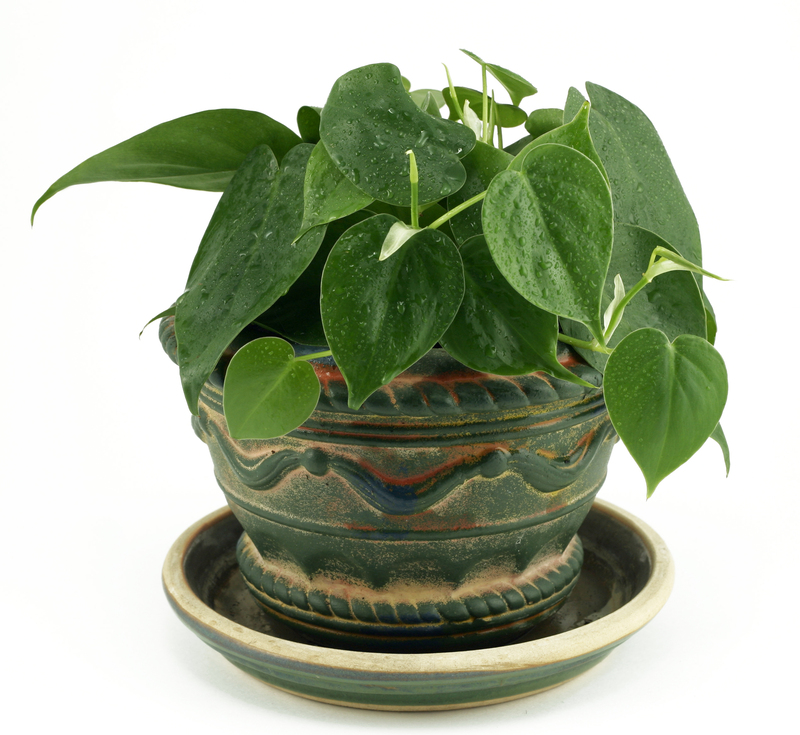Manifest tranquility in your backyard with Zen garden styles
Posted on 05/09/2025
Manifest Tranquility in Your Backyard with Zen Garden Styles
Are you craving a serene retreat right in your backyard? Transform your outdoor space into an oasis of peace by embracing Zen garden styles. These timeless Japanese-inspired landscapes invite relaxation, contemplation, and harmony, blending natural elements into a soulful escape. Discover how to manifest tranquility in your backyard with design principles, elements, and tips to cultivate your own Zen garden sanctuary.

What is a Zen Garden?
A Zen garden, also known as a Karesansui or dry landscape garden, originated in Japan and was developed as an aid for meditation in Zen Buddhism. These gardens represent symbolic landscapes, using rocks, gravel, sand, moss, and minimal plant life to evoke the essence of mountains, rivers, and islands. Through abstract forms, a Zen garden invites introspection, stillness, and mindfulness.
Key Elements of Zen Garden Styles
- Minimalism: Embrace simplicity and reduce clutter. Every element serves a purpose and holds significance.
- Natural Materials: Incorporate stones, gravel, sand, moss, bamboo, and wood to echo organic forms.
- Asymmetry: Rather than rigid symmetry, Zen gardens use balanced irregularity to suggest effortless naturalness.
- Symbolism: Shapes and groupings of rocks, raked patterns in sand, and water features symbolize the greater landscape and philosophical concepts.
- Space: The empty areas in a Zen garden are just as meaningful as the elements themselves, reflecting the value of openness and calm.
Types of Zen Garden Styles to Consider
1. Traditional Rock and Sand Gardens (Karesansui)
The quintessential Zen garden style features raked sand or gravel representing rippling water, with strategically placed rocks symbolizing mountains or islands. Often devoid of water and lush vegetation, these gardens encourage silent contemplation and a connection with nature through abstraction.
- Raked Patterns: Use a wooden rake to shape flowing waves and circular patterns, fostering mindfulness during the process.
- Stone Placement: Group rocks in odd numbers--usually threes or fives--to maintain visual harmony and suggest natural arrangement.
- Moss Accents: Introduce patches of moss around stones to evoke the passage of time and age-old serenity.
2. Moss Gardens
For a lush, calming effect, create a moss Zen garden in shaded or moist areas of your backyard. Moss-covered ground and stones evoke the tranquility of ancient temples and forest glades.
- Rich Texture: Moss introduces soft textures and dense greenery with little need for maintenance once established.
- Subtle Contrasts: Pair moss with rugged rocks and timber for dynamic yet calming landscapes.
- Shade-Loving Plants: Augment your moss Zen garden with ferns or shade-tolerant grasses for a more layered look.
3. Dry Stream or Riverbed Gardens
Bring the soothing flow of water into your backyard--without the hassle of maintenance--by designing a dry stream with pebbles and stones. This Zen landscaping style suggests the movement of rivers and streams, channeling energy and attention through your garden.
- Winding Pathways: Use gravel, river stones, and boulders in curving lines to mimic flowing water.
- Bridges & Stepping Stones: Install simple wooden bridges or flat stones as crossings, symbolizing journeys and transitions.
- Decorative Accents: Add Japanese lanterns, low-lying shrubs, or bamboo screens along the streambed for character and privacy.
4. Courtyard Zen Gardens
Even small spaces--like patios or courtyards--can embrace Zen garden styles. Container plantings, small gravel beds, and tabletop water features make tranquility accessible, no matter the square footage.
- Compact Arrangements: Use shallow trays filled with sand and rocks for miniature Zen displays.
- Potted Bamboo or Evergreens: Incorporate plants in decorative pots or stone basins to frame the space and purify the air.
- Privacy Screens: Bamboo fencing or sliding wooden panels create secluded sanctuaries for meditation or yoga.
Designing Your Own Zen Garden Retreat
Step 1: Assess Your Space
Begin by identifying the backyard area you wish to transform. Consider sunlight exposure, soil type, drainage, and the level of privacy you desire. Whether you have an expansive backyard or a modest courtyard, Zen garden principles can be customized to fit any space.
Step 2: Select Your Zen Garden Style
Choose a style--or blend of styles--that resonates most with your vision. Ask yourself:
- Do you prefer the minimalism of sand and stone, or the verdant tranquility of moss and plants?
- Are you drawn to gentle curves or geometric simplicity?
- Would a central water feature enhance your sense of peace?
Step 3: Gather Materials
Essential Zen garden materials typically include:
- White gravel or sand (fine, light-colored sand reflects purity and calm)
- Naturally shaped rocks and boulders
- Moss, ferns, or low-growing evergreen shrubs
- Bamboo fencing, wooden gates, or stone lanterns for structure and decor
- Rakes and hand tools for shaping patterns
Step 4: Plan Layout and Installation
Sketch a scaled layout before you begin. Mark where sand areas, rocks, and plants will go. Asymmetry and irregular clustering are encouraged; avoid placing elements in neat rows. Install rocks partially buried for a naturalistic appearance, and then spread sand or gravel evenly in open spaces. Use a wooden rake to create flowing, tranquil patterns.
Step 5: Add Finishing Touches
Personalize your Zen garden retreat with accessories that promote peace and reflection:
- Bamboo Water Basins (Tsukubai): The gentle sound of water trickling from a bamboo spout calms the mind.
- Stone Lanterns: Traditionally placed near entrances or along pathways, they cast soft, atmospheric light.
- Ornamental Bridges: Small wooden or stone bridges symbolize journeys and transitions in life.
Benefits of Bringing Zen Into Your Backyard
A Zen-inspired garden offers more than visual appeal. The thoughtful arrangement of elements and minimalist design bring transformative benefits:
- Stress Relief: Surrounded by simplicity, your senses unwind and your mind clears.
- Meditative Focus: Raking patterns, tending moss, or simply sitting quietly fosters mindfulness and present-moment awareness.
- Harmonizing Energy: The balance of yin and yang--soft moss with rugged stones, open space with dense plantings--restores energy and equilibrium.
- Low Maintenance Beauty: With resilient plants and minimal upkeep, your Zen retreat remains tidy and attractive year-round.
- Wildlife Attraction: Birds, insects, and small animals find sanctuary among rocks, plants, and water features, enhancing the sense of life and interconnection.
Tips for Maintaining Zen Tranquility
Minimal Upkeep, Maximum Peace
Zen garden landscaping is designed for ease of care. Here's how you can keep your backyard Zen retreat peaceful and pristine:
- Rake Regularly: Refresh sand or gravel patterns and remove leaves or debris as needed.
- Trim and Weed: Keep moss, shrubs, and groundcovers neat to preserve clean lines.
- Control Algae & Moss: Lightly spray water in dry spells, and gently remove excessive growth from paths or rocks.
- Check Structures: Ensure bamboo screens, lanterns, or bridges are stable and damage-free.
Infusing Modern and Personal Touches
Modern interpretations of Zen garden styles allow for personalization. Blend tradition with contemporary flair:
- Lighting: Add energy-efficient LED path lights or soft lanterns for nighttime ambiance.
- Color Accents: While classic Zen gardens avoid bright flowers, subtle accents like red maples or black pebbles provide visual interest.
- Seating: Incorporate low benches, meditation cushions, or hammocks for comfortable contemplation spots.
- Art & Sculpture: Select minimalist, nature-inspired art pieces--like a smooth river rock or a simple clay vessel--to underscore tranquility.

FAQs About Zen Garden Tranquility
- Can I create a Zen garden in a small space?
Absolutely! Miniature Zen gardens--using trays, containers, or a corner of your yard--work beautifully to manifest tranquility, even in apartments or urban settings. - Do Zen gardens require special plants?
No. While moss, bamboo, or Japanese maples are traditional, any plant that complements your climate and garden style can work. Choose low-maintenance, evergreen varieties for ease. - How do I keep my Zen garden looking clean?
Regular raking and spot cleaning prevent debris build-up. Trim plants as needed, and occasionally refresh sand or gravel for brightness. - Can water features be included in a Zen garden?
While traditional Zen gardens are "dry" landscapes, small, calm water features--like basins or fountains--can be incorporated for modern adaptations, promoting tranquility through soothing sound.
Conclusion: Your Backyard Sanctuary Awaits
To manifest tranquility in your backyard, design with intention and let simplicity guide your choices. By adopting Zen garden styles--from raked sand and stone to mossy groves and tranquil pathways--you invite peace, reflection, and balance into everyday life. Remember, your Zen garden is a living meditation, always evolving yet firmly rooted in a philosophy that values calm, beauty, and harmony.
Ready to start your journey? Embrace the timeless principles of Zen garden landscaping and create an outdoor haven where serenity naturally flourishes. Transform your backyard into a sanctuary--one stone, one ripple, one breath at a time.

